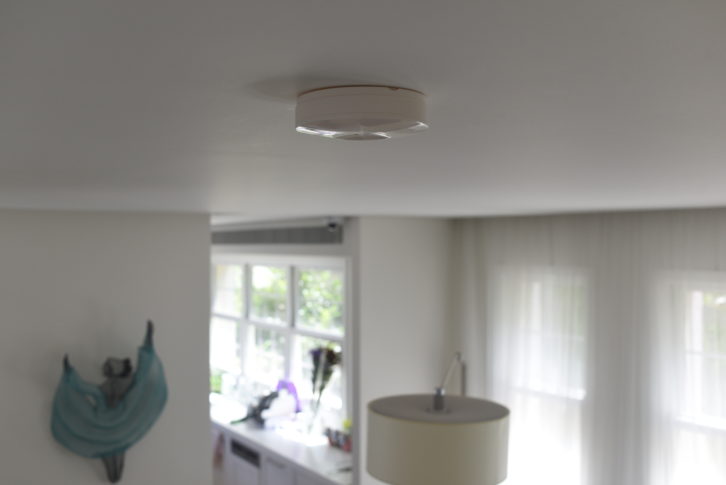The smart home industry is in the midst of an ongoing crescendo, with new devices from smart vacuums to smart plugs entering end-users’ homes every day. Already, 32% of U.S. households have smart homes devices, and that number is expected to pass 50% by just 2024, says Statista. However, while these devices bring many exciting features, they’re lacking the true element which all smart home users (both enthusiasts and laggards, alike) so crave: true automation and personalization.
See also: What Is A Smart Home?

With smart appliances that automatically brew your morning coffee and smart pet feeders that automatically fill your dog’s or cat’s bowl, it may seem that automation has already swept into our homes and streamlined our daily routines. In reality, most smart home end-users find themselves living, not in an automated oasis of intelligent connected devices, but among a mass of finicky gadgets that sometimes demand more from us than they can provide in return.
That’s not to say that there hasn’t been significant development of automated platforms in recent years.
For one, the proliferation of smart speaker virtual assistants like Amazon Alexa has put the convenience of hands-free smart home control in the grasp of any user who wants it. These virtual assistants are, however, still not smart enough to pick up every voice command correctly, so users will have to be conscious of their word choice, enunciation, and volume when addressing the likes of Alexa, Google Assistant, or Apple Siri. However, while more than 4 in 10 consumers own one of these smart speaker virtual assistants, 7 in 10 say these devices cause privacy concerns.
For these users with heightened privacy concerns who might not wish to bring a voice-activated assistant into their homes, there are other ways for them to achieve levels of automation in their smart home. For example, just the tap of a screen on a smartphone or even a smartwatch can instantly trigger smart lights to turn on or off, smart locks to lock or unlock, or near any number of other smart devices to engage.
Users further have the option to go completely hands-free in controlling their smart homes with the advent of smart motion sensors that trigger smart home activity from simply walking by or through a particular, designated zone. It’s important to note, however, that these sensors are rather easily susceptible to error, as they can be triggered by almost any kind of errant motion, such as that of a wandering pet. Also, while smart motion sensors may excel in automation, they are unable to deliver when it comes to personalization–another key whitespace in the smart home industry.

While the smart home market has given users such delights as energy-efficient smart bulbs and intuitive smart thermostats and is making pointed steps to reach elevated levels of automation, it is failing users in terms of personalization, as most devices in the market are unable to truly identify individual persons.
For instance, while smart home systems that have smart locks with individualized codes or encoded key fobs may enable the smart home to recognize when a specific individual has arrived home, it cannot ascertain presence beyond initial entry. In other words, it cannot know which specific member of the household is in which specific room until they engage via voice, app, or other tangible touchpoint.
Even upon this engagement, most smart home systems only recognize that a command has been made and have no knowledge of who is making the command or what their specific preferences are.
See also: How The Smart Home Is Changing Home Security
Consider this scenario: You come home from work and walk into your living room ready to unwind. You may trigger your smart motion sensor to turn on your smart lights; you may ask your virtual assistant to start your favorite playlist; and you may use your smartphone to adjust the smart thermostat. While all of these smart devices may be able to successfully activate themselves, they still require a command and a signal of customization from you.
Now, consider an alternative: You come home from work and walk into your living room ready to unwind. Your smart home system immediately recognizes your presence and identifies who you are. It tells the smart lights to turn to the specific brightness level that you prefer at 6:30 p.m. It begins playing your evening, “unwind” playlist. And it adjusts your smart thermostat to your preferred temperature of 70 degrees.
You have neither walked past a motion sensor nor voiced a command nor tapped your smartphone; nonetheless, your entire ecosystem of connected devices has automatically adjusted to your predetermined, personalized settings.

In this second scenario, your smart home is equipped with presence-sensing technology. Presence-sensing technology (PST) is leading a new trend of fully-automated, personalized smart home systems. This technology is deployed via a new breed of smart home sensors: the true occupancy automation sensor, which identifies an individual’s specific presence in a room and triggers smart home devices to instantly tune to the individual’s personal preferences.
This technology is being championed by Israeli startup, Intellithings, who is delivering its patented presence-sensing technology to end-users via its true occupancy automation sensor, RoomMe.
The presence-sensing technology uses the unique Bluetooth signatures of individuals’ matched smartphones to sense who is and isn’t in which specific room(s) of the house and then enables personalized smart home scenes. Unlike virtual assistants, apps on smartwatches and smartphones, and smart motion sensors, presence-sensing technology enables end-users to realize true automation and personalization, i.e., their smart homes are able to tune themselves to person-specific customizations without requiring a command.
Automation and personalization are the hallmarks of what we as an industry envision as the truly intelligent smart home. Unfortunately, most smart home devices available today are only capable of achieving low levels of automation and rudimentary levels of personalization, at best. In other words, they may be able to automatically turn on or off, but they require a trigger from you to do so; similarly, they may be able to tune to a certain setting, but they will tune to that predetermined setting no matter which member of the household is giving the command. Only presence-sensing technology is offering a new approach to control the smart home in a way that offers true automation and real opportunities for personalization.
About Oren Kotlicki
Oren Kotlicki is founder and CEO of Intellithings Ltd., developers of technology solutions that empower connected smart home devices to deliver personalized automations. Kotlicki is an expert in smart home devices, safety systems, detectors, and burglary, with over 20 years of experience working with wireless technology in product management and business development.
from TechRadar - All the latest technology news https://ift.tt/3tPNHti


